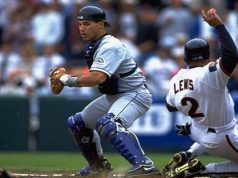Soccer requires a unique blend of endurance, speed, and strength. Players must excel in cardiovascular fitness and agility.
Soccer, known globally as “the beautiful game,” demands various physical skills from its players. Athletes need to maintain high levels of endurance to keep up with the game’s pace. Speed and agility are crucial for quick sprints and sudden changes in direction.
Strength also plays a vital role, enabling players to shield the ball and win physical battles. Understanding these physical demands helps in appreciating the sport’s complexity and the athletes’ dedication. Effective training programs focus on these key areas to enhance performance and reduce injury risks. Overall, soccer is not just about skill but also about peak physical condition.
Introduction To Soccer Science
Soccer, known as the beautiful game, is a global phenomenon. This sport captures the hearts of millions. Understanding the science behind soccer is crucial. It reveals how players perform at their best. It also shows how they avoid injuries. Let’s dive into the science of soccer!
History And Evolution
Soccer has a rich history. It dates back to ancient times. People played ball games in many cultures. Modern soccer started in England in the 19th century. The rules were simple and teams were small.
As the game evolved, so did the rules. The Football Association standardized them in 1863. This made the game more organized. Now, soccer is played worldwide. Millions of fans watch matches every week. The game has grown into a complex sport.
Today’s players are faster and stronger. They use advanced training methods. Coaches study game tactics deeply. The evolution of soccer continues. Technology plays a big role in this evolution.
Modern Game Dynamics
The modern game is fast-paced and demanding. Players run several miles each match. They need excellent stamina and strength. Speed is crucial for both defense and attack. Players must change direction quickly.
Teamwork is also essential. Players communicate constantly on the field. They need to understand each other well. Coaches use video analysis to improve strategies. They study opponents’ weaknesses and strengths.
Injuries are a big concern in modern soccer. Teams employ sports scientists and physiotherapists. They help players stay fit and recover quickly. Nutrition is also vital. Players follow strict diets to maintain peak performance.
| Aspect | Importance |
|---|---|
| Stamina | Players run long distances |
| Strength | Needed for tackles and jumps |
| Speed | Quick movements are essential |
| Teamwork | Cooperation is crucial |
| Nutrition | Maintains physical health |
Understanding these dynamics helps players and coaches. They can improve performance and stay ahead. Soccer continues to evolve. The science behind it becomes more sophisticated. Fans can appreciate the game’s beauty even more.
Read More:
- Top Drills to Enhance Your Soccer Performance
- Basic Soccer Skills: Dribbling, Passing, And Shooting
- Essential Soccer Gear for Beginners
Physical Fitness In Soccer
Soccer, often called the beautiful game, demands high physical fitness. Players need a mix of endurance, strength, and speed. Let’s explore the key aspects of physical fitness in soccer.
Endurance And Stamina
Endurance is crucial for soccer players. They run an average of 7 miles per match. This includes sprinting, jogging, and walking. Building stamina helps players maintain high energy levels throughout the game.
To improve endurance, players should engage in aerobic exercises. These include:
- Long-distance running
- Cycling
- Swimming
Interval training is also effective. This involves alternating between high and low-intensity activities. For example, sprinting for 30 seconds, then jogging for 90 seconds.
Strength And Conditioning
Strength and conditioning are vital for soccer performance. Players need strong muscles for various actions. These include shooting, tackling, and jumping.
Key strength exercises for soccer players include:
- Squats
- Lunges
- Deadlifts
Conditioning also focuses on agility and speed. Agility drills improve quick direction changes. Speed drills enhance sprinting ability.
| Exercise | Benefit |
|---|---|
| Squats | Build leg strength |
| Lunges | Improve balance and coordination |
| Deadlifts | Strengthen the core and lower body |
Combining endurance and strength training creates well-rounded soccer players. This balance enhances overall performance on the field.
Injury Prevention And Management
Soccer is a high-intensity sport that demands agility, speed, and endurance. These demands can lead to injuries. Effective injury prevention and management are crucial for players’ health and performance. Understanding common soccer injuries and rehabilitation techniques can help players stay in the game.
Common Soccer Injuries
Soccer players often face various injuries. Some of the most common include:
- Sprains and Strains: These affect ligaments and muscles.
- Knee Injuries: Includes ACL tears and meniscus injuries.
- Ankle Injuries: Sprained ankles are frequent in soccer.
- Fractures: Broken bones from collisions or falls.
- Head Injuries: Concussions from headers or falls.
Rehabilitation Techniques
Rehabilitation is vital for recovery and return to play. Key techniques include:
- Rest and Ice: Rest injured areas and apply ice to reduce swelling.
- Physical Therapy: Exercises to restore strength and flexibility.
- Massage Therapy: Helps relieve muscle tension and improve circulation.
- Strength Training: Builds muscle to support injured areas.
- Hydrotherapy: Water exercises to reduce joint stress.
Nutrition For Soccer Players
Proper nutrition is crucial for soccer players. It supports energy, endurance, and recovery. Soccer demands high physical performance. Balanced meals and hydration are key.
Pre-match Meals
Pre-match meals fuel the body. They should be eaten 3-4 hours before the game. The focus should be on carbohydrates, proteins, and healthy fats.
| Food Type | Examples |
|---|---|
| Carbohydrates | Whole grain pasta, brown rice, quinoa |
| Proteins | Chicken breast, tofu, fish |
| Healthy Fats | Avocado, nuts, olive oil |
Avoid high-fat and high-fiber foods. They can cause stomach discomfort. Include fruits and vegetables for vitamins and minerals.
Hydration Strategies
Hydration is vital for soccer players. Dehydration affects performance and health. Drink water regularly before, during, and after the game.
- Drink 500-600 ml of water 2-3 hours before the game.
- Consume 200-300 ml 20 minutes before the game.
- Hydrate every 15-20 minutes during the game.
- Replace lost fluids after the game with water or a sports drink.
Electrolytes are also important. They help maintain fluid balance. Choose drinks with sodium, potassium, and magnesium.
Psychological Aspects
Soccer is not just about physical strength and skills. The game also demands strong psychological traits. Players must stay mentally strong and work well with their team. Let’s explore these psychological aspects.
Mental Toughness
Mental toughness is a key trait in soccer. Players face many pressures during a game. They must stay focused and calm. Here are some ways mental toughness helps:
- Focus: Players must keep their eyes on the ball and goal.
- Resilience: They need to bounce back after losing a goal.
- Confidence: Trusting their skills boosts performance.
Team Dynamics
Team dynamics play a crucial role in soccer. Good teamwork can lead to victory. Poor teamwork can cause losses. Here are some factors of team dynamics:
| Factor | Description |
|---|---|
| Communication | Players must talk to each other on the field. |
| Trust | Each player should trust their teammates’ skills. |
| Roles | Every player has a role to play in the team. |
These factors help teams work together smoothly. They can make or break a game.
Frequently Asked Questions
What Are The Physical Demands In Soccer?
Soccer requires endurance, speed, agility, and strength. Players constantly move, sprint, and change direction quickly.
How Much Running Do Soccer Players Do?
Soccer players run an average of 7-9 miles per game, combining jogging, sprinting, and walking.
Why Is Agility Important In Soccer?
Agility helps players change direction quickly, dodge opponents, and maintain control of the ball.
How Does Strength Affect Soccer Performance?
Strength enhances a player’s ability to shield the ball, tackle, and win aerial duels.
What Role Does Endurance Play In Soccer?
Endurance allows players to maintain high performance throughout the game, reducing fatigue and risk of injury.
Conclusion
Understanding soccer’s physical demands helps players improve their performance. Proper training and recovery are crucial. Embrace science-backed methods for better results. Stay informed, stay fit, and enjoy the beautiful game to its fullest. Keep exploring new techniques and keep pushing your limits.
Your dedication will pay off on the field.








